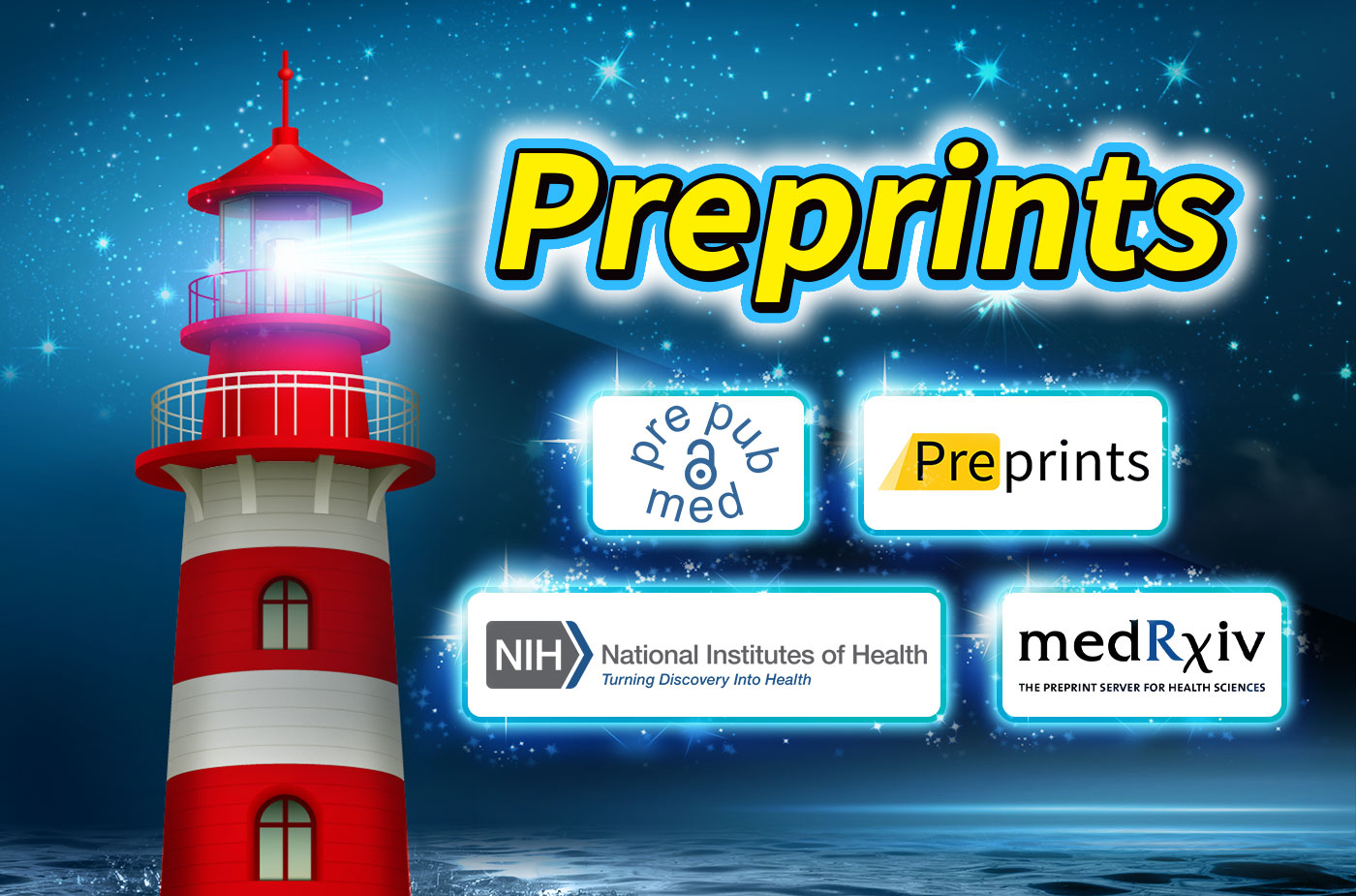Preprints: shining a light on emerging research
By Dr. Dean Meyer, Edanz Learning team

When you post the draft of your scientific manuscript publicly before it is accepted by a journal, your draft is called a preprint.
There are several websites called preprint servers that allow researchers to post an unpublished manuscript so that everyone in the scientific community can read their findings.
This is useful if you have an important discovery that you want to publicize or if you have developed a method that others can benefit from using (such as emerging COVID-19 SARS-CoV-2 research).
You can also sharpen your own reading and reviewing skills by critically reading a preprint as a peer reviewer would do, looking for problems in the manuscript and methods.
Table 1: Some of the benefits and challenges of preprints
✓ Benefits of preprints
✗ Challenges of preprints
• Increase the pace and efficiency of discovery.
• Get fast feedback on your work.
• Public comments on mistakes may be embarrassing
• preprints cannot be completely removed after being posted.
• Help to shape clinical practice rapidly in response to a crisis.
• At the preprint stage, a paper has not yet been formally nor rigorously peer-reviewed.
• Demonstrate the value of your work and your productivity as an early career researcher.
• You must check with your target journal whether they allow posting a preprint.
• Even if the journal allows advance posting of a preprint, you cannot use the journal’s template (which would imply acceptance).
• Provide new ideas for other researchers.
• Others might not be allowed to cite non-peer-reviewed materials as references in their work.
• Reduce research waste by notifying other researchers what experiments you have already conducted on the topic.
• Research might receive premature media coverage.
• If you plan to apply for a patent, your patent application will be harmed by any preprints of the work.
Table 2: Some popular/recommended preprint servers
medRxiv (pronounced
‘med archive’)
• aims to “reduce the potential for harm” – all submissions to are screened for plagiarism, non-scientific content, inappropriate article types (opinion pieces, case reports, etc), and any potential risk to the public or to individual patients.
• in counterbalance with its screening process, still aims to retain “the advantages of speed and openness” that preprint servers offer, such as early access to emerging COVID-19 SARS-CoV-2 research.
• has a fast, simple, submission process
• offers high visibility; it reposts preprints in Europe PMC, Google Scholar, Scilit, SHARE and PrePubMed.
• follows the COPE (Committee on Publication Ethics) Code of Conduct and Best Practice Guidelines
• preprints are posted under an open access license
• SSRN posts preprints from various research disciplines (applied sciences, health sciences, humanities, life sciences, physical sciences, and social sciences) so it is useful for cross-disciplinary research.
• While other preprint servers act as content repositories, SSRN instead classifies papers into topic-specific online subscription journals that are sent to individuals and institutions.
• provides authors with useful metrics on readership and citations.
• has over 186000 preprints searchable alongside journal-published articles
• shows a link to the published article in cases where the preprint has since been published
• is popular with many international science funders; has a ‘grant finder’ function that can search 80,000+ biomedical research grants
Pro Tips!
At the preprint stage, your manuscript has not been evaluated by journal reviewers. It may contain mistakes in your data interpretation. Preprint servers allow readers to comment publicly on your manuscript, and everyone can see these comments. Generally, preprints cannot be completely removed after being posted and receiving a DOI (Digital Object Identifier).
In addition, some journals will not accept a manuscript that is posted on a preprint server, so be sure to check your target journal’s requirements and restrictions before posting a preprint. Even if your journal permits preprints, never use the journal template in the file you post to the preprint server! Using the template would imply that the journal has already accepted your manuscript, which is not the case.
Good luck with your searching, reviewing, and posting of preprints! Be sure to check out Edanz’s self-study courses for more tips on preprints and other aspects of reading and publishing.



